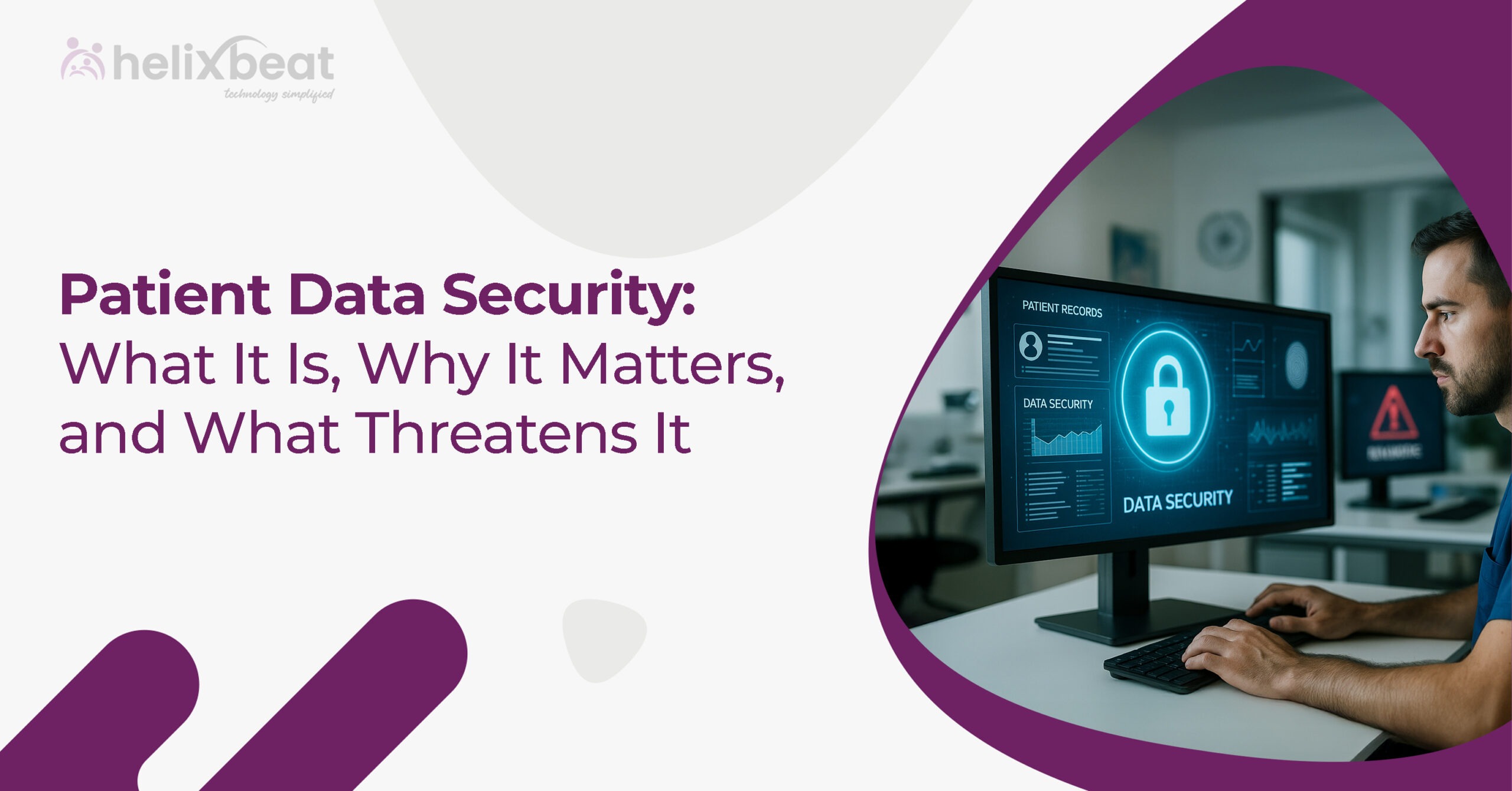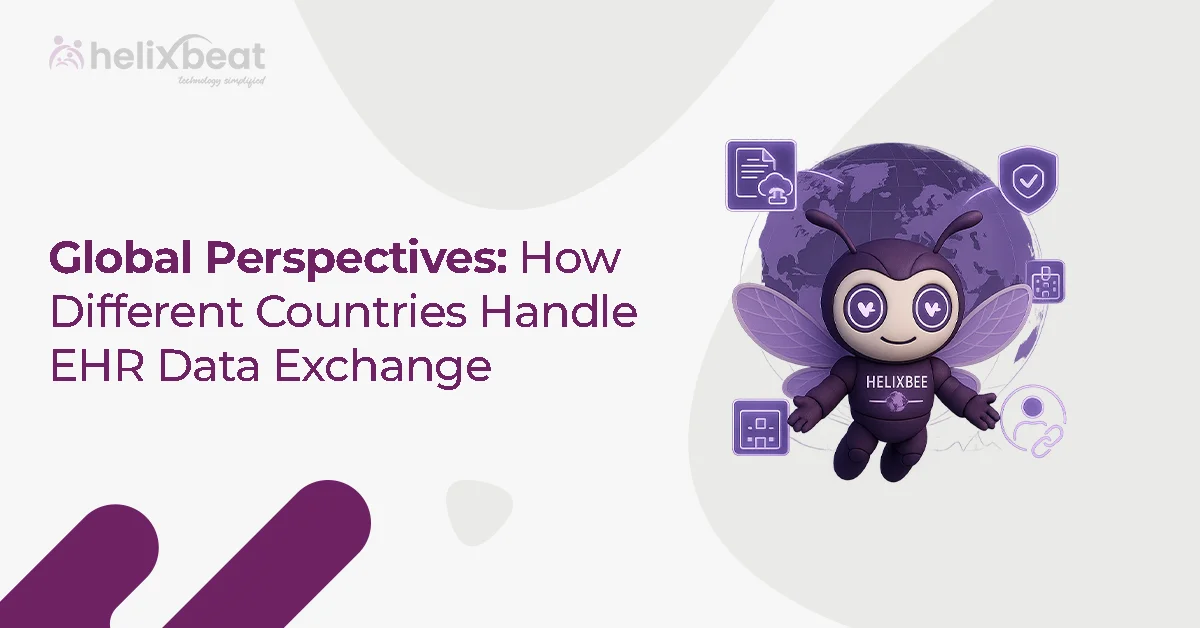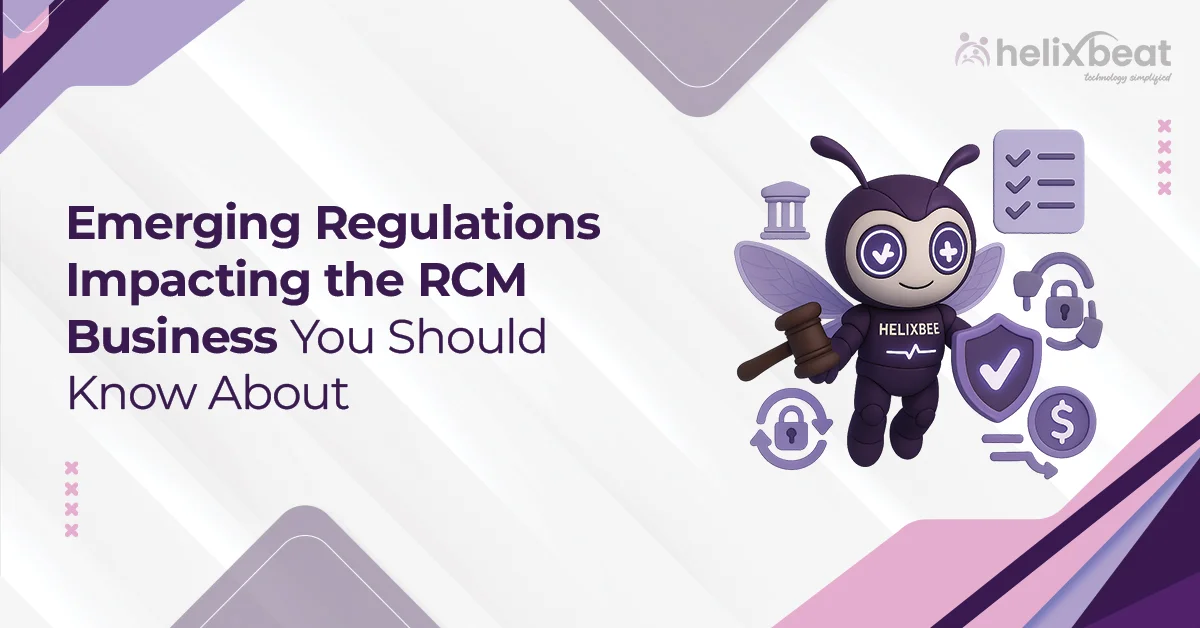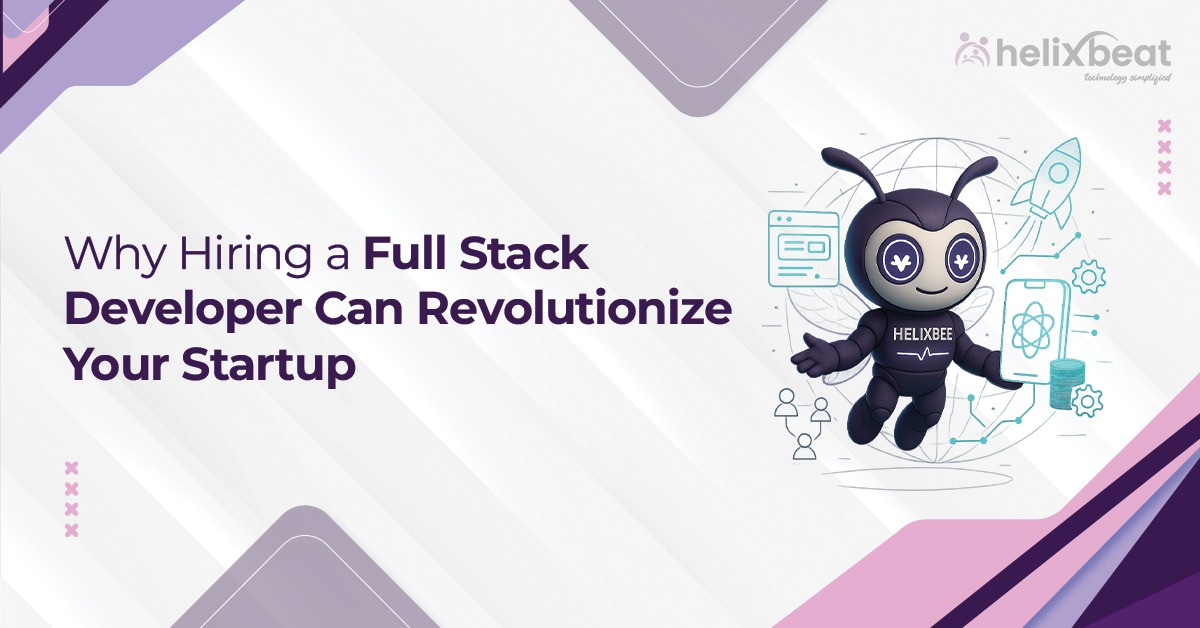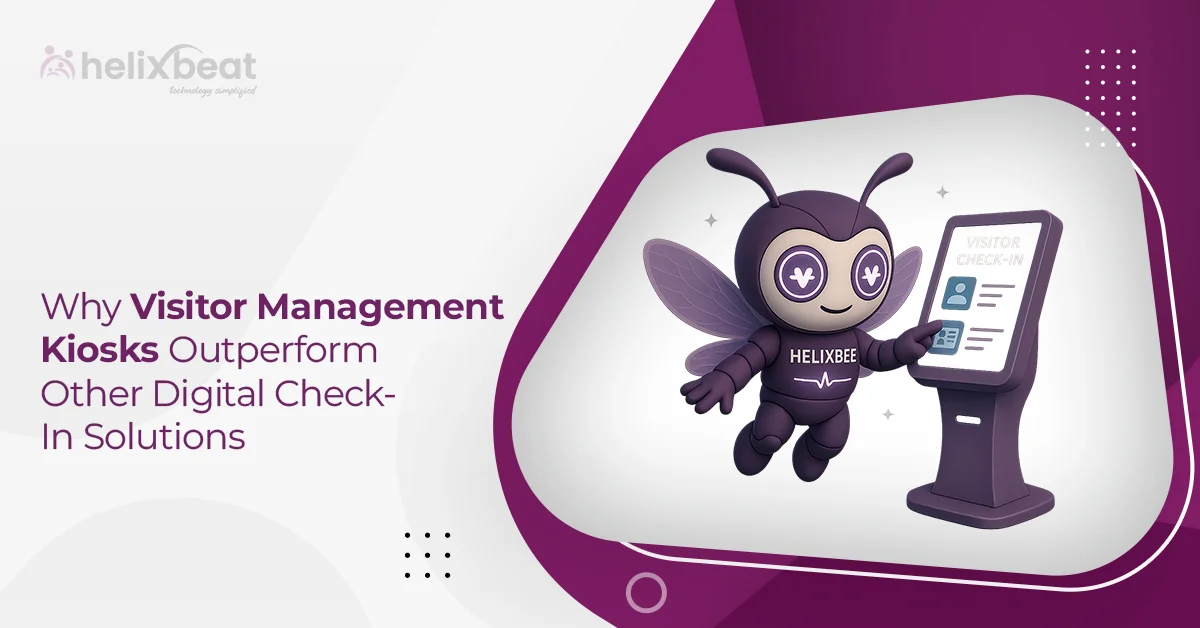“Securing patient data is not just about compliance; it is about maintaining trust between patients and providers. A single breach can impact lives beyond just numbers.”
– Dr. Jane Thornton
Patient data security has become essential as healthcare providers increasingly rely on digital systems to store and share sensitive information. Medical documents contain some of the most personal and confidential data about individuals, making their protection essential for patient safety and trust.
Patient data security involves the methods, tools, and procedures designed to safeguard patients’ health information from unauthorized access, theft, or loss. This includes protecting electronic health records (EHRs), billing data, diagnostic results, and all other types of healthcare information.
Helixbeat enables organizations to secure sensitive data through end-to-end encryption, real-time monitoring, and strict adherence to industry regulations, all while facilitating smooth care coordination.
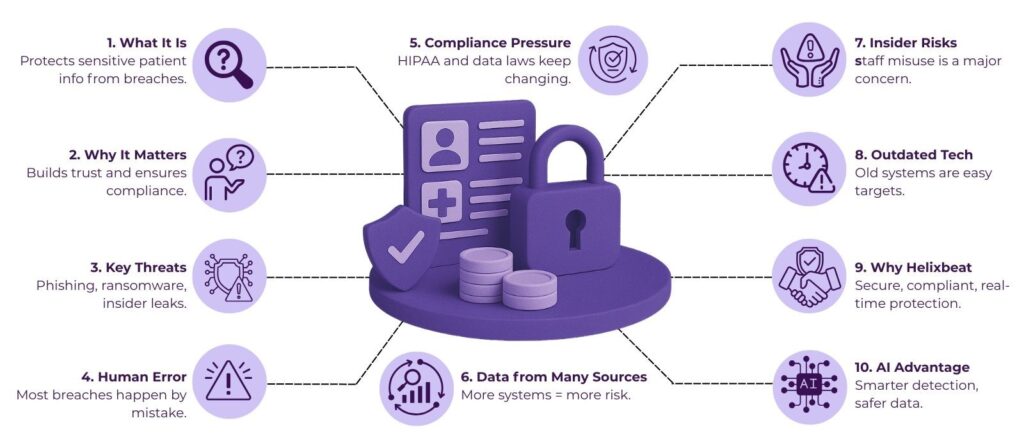
Table of Contents
Understanding Healthcare Data Security and Healthcare Information Security
Healthcare data security involves methods and practices to protect sensitive healthcare information from unauthorized access, theft, loss, or damage. This data includes patient records, medical histories, and billing details, making its security vital for maintaining patient trust and complying with HIPAA regulations.
The focus is on safeguarding patient data by controlling access, storage, and transmission. Effective security measures are crucial to prevent data breaches and internal misuse, which can lead to identity theft, financial losses, and reputational damage for healthcare providers.
CTA: [Get a Free Demo to see how Helixbeat’s patient data security solutions can safeguard your healthcare data effectively.
How Healthcare Information Security Protects Patient Data?
By implementing healthcare information security practices, organizations can ensure that only qualified personnel have access to sensitive data, that data is transmitted safely between systems, and that it remains intact without unauthorized alterations. This includes monitoring suspicious activity, regularly updating security protocols, and preparing for potential threats.
Main Threats to Data Security in Healthcare
Patient data security is critical because healthcare organizations handle sensitive personal information, including medical histories, social security numbers, and payment details. While multiple threats persist, human error remains the biggest threat to healthcare data security. The complexity and volume of healthcare information make it a prime target for cybercriminals.
Common threats to healthcare data security include:
- Phishing Attacks: Cybercriminals often use deceptive emails or messages to trick healthcare staff into revealing login credentials or installing malware.
- Ransomware: Malicious software that encrypts healthcare data, blocking access until a ransom is paid. These attacks can cripple hospital operations and put patient safety at risk.
- Insider Threats: Employees or contractors with access to sensitive data may intentionally or accidentally misuse it, leading to data leaks or breaches.
- Unsecured Devices and Networks: Many healthcare organizations rely on connected medical devices and wireless networks that can be exploited if not properly secured.
- Third-Party Vulnerabilities: Vendors and partners who handle healthcare data may have weaker security, creating additional risk exposure.
- Data Loss and Theft: Physical theft of devices or loss of portable media containing patient information remains a significant concern.
- Software Vulnerabilities: Outdated or unpatched healthcare applications and systems can be exploited by attackers to gain unauthorized access.
Challenges Facing Healthcare Data Managers
Understanding the key challenges and threats helps healthcare providers build stronger defenses to protect patient data security and maintain trust.
- Increasing Sophistication of Cyberattacks
- Healthcare data security faces persistent threats from increasingly advanced cyber criminals.
- Attackers use ransomware, phishing, and malware tactics explicitly designed to exploit vulnerabilities in healthcare systems.
- These attacks can cripple operations and expose vast amounts of sensitive patient data, highlighting the need for robust and adaptive security measures.
- Complex Regulatory Compliance Requirements
- Healthcare organizations must comply with numerous regulations like HIPAA, and others, each with stringent data privacy and security rules.
- Maintaining changing laws and ensuring compliance across diverse systems and locations is a constant challenge: failure to comply risks data breaches and results in hefty fines and reputational damage.
- Data Integration from Multiple Sources
- Modern healthcare relies on data from various sources, including electronic health records (EHR), medical devices, third-party vendors, and cloud services.
- Securing this interconnected data flow is challenging because each source may have different security protocols and vulnerabilities, increasing the risk of unauthorized access or data leakage.
- Insider Threats and Human Error
- Not all threats come from external hackers; insider threats remain a significant risk.
- Employees or contractors may accidentally expose patient data through negligence, weak passwords, or falling victim to phishing scams.
- Intentional misuse by insiders also poses a serious challenge to healthcare data security.
- Legacy Systems and Outdated Technology
- Many healthcare facilities still rely on legacy IT systems that lack modern security features.
- These outdated systems can be challenging to secure, incompatible with newer technologies, and more vulnerable to attacks.
- Upgrading or replacing these systems requires time, resources, and careful planning to avoid disrupting patient care.
- Real-World Examples of Healthcare Data Breaches
The healthcare industry has witnessed several high-profile data breaches in recent years, emphasizing the urgent need for strengthened healthcare information security:
- Anthem Inc. (2015)
Anthem suffered a cyberattack, one of the most significant healthcare breaches, compromising nearly 79 million patient records. Attackers accessed sensitive data, including names, birthdates, social security numbers, and employment information. This breach underscored the vulnerability of even well-established healthcare organizations to sophisticated cyberattacks.
- University of California, San Francisco (UCSF) Ransomware Attack (2020)
UCSF was hit by a ransomware attack that demanded $1.14 million to restore encrypted data. While UCSF paid the ransom, the incident raised awareness about the growing threat of ransomware targeting healthcare institutions, which can paralyze critical medical services.
Why You Should Choose Helixbeat for Your Healthcare Data Security?
Selecting the appropriate platform for secure collaboration can greatly protect sensitive health information while facilitating smooth communication among healthcare providers. Helixbeat’s Secure Collaboration platform is specifically crafted to address the intricate requirements of healthcare data security.
It surpasses conventional security practices by incorporating advanced technologies and compliance standards to safeguard patient data throughout its entire lifecycle. Helixbeat tackles these challenges with a comprehensive approach that includes the following:
- End-to-End Encryption: Data is encrypted in transit and at rest, ensuring that patient information remains confidential even if intercepted.
- Strict Access Controls: Role-based permissions and multi-factor authentication limit access only to authorized personnel, reducing insider threats and accidental data leaks.
- Compliance with Healthcare Regulations: Helixbeat’s platform fully complies with HIPAA, and other global healthcare data protection standards, helping organizations avoid costly penalties and reputational damage.
- Real-Time Monitoring and Alerts: Continuous monitoring detects suspicious activities immediately, allowing proactive mitigation of potential threats.
- Seamless Integration: The platform easily integrates with existing Electronic Health Records (EHR) systems and healthcare workflows, ensuring security doesn’t disrupt care delivery.
- Audit Trails and Reporting: Detailed logs provide transparency and accountability, essential for regulatory audits and internal governance.
Benefits of Helixbeat’s Secure Collaboration Platform
Helixbeat’s platform combines powerful features tailored for healthcare data security with tangible benefits that improve organizational efficiency and trust:
- AI-Powered Threat Detection: Leverages artificial intelligence to identify and neutralize threats faster than conventional methods.
- Scalable Cloud & On-Premises Deployment: Supports both cloud-based and on-premises environments, offering flexibility to meet organizational needs and infrastructure preferences.
- User-Friendly Interface: Designed with healthcare professionals in mind, enabling secure collaboration without complex setups or steep learning curves.
- Real-Time Secure Data Exchange: Facilitates instant, encrypted patient records and clinical data sharing across teams, boosting care coordination and outcomes.
- Cost-Effective Security Solution: Provides enterprise-grade protection with scalable pricing options, making advanced healthcare data security accessible to organizations of all sizes.
- Dedicated Support and Compliance Assistance: Helixbeat offers expert guidance to help healthcare providers maintain compliance and optimize their data security strategies.
The Bottom Line
Protecting patient data is a legal and regulatory obligation and a fundamental trust factor between patients and providers. Healthcare data security goes beyond just technology; it requires a comprehensive approach that involves robust policies, employee training, and continuous monitoring to combat evolving threats.
With cyberattacks becoming more sophisticated, securing healthcare information is a mission-critical priority that can directly impact patient outcomes and the overall integrity of healthcare services. Furthermore, Helixbeat provides scalable solutions tailored to healthcare providers’ unique needs, whether hospitals, clinics, or research institutions, allowing them to focus on delivering exceptional patient care with confidence that their data is secure.
Ready to strengthen your healthcare data security?
Get a Free Demo of Helixbeat’s Secure Collaboration
FAQs
- What are the main threats to data security?
The main threats include hacking, phishing attacks, ransomware, insider threats, data breaches, and accidental data loss.
- What is healthcare data security?
Healthcare data security involves protecting patient information from unauthorized access, breaches, or theft through policies, technologies, and practices.
- What is patient data security?
Patient data security focuses specifically on safeguarding personal and medical information of patients to maintain privacy and trust.
- Why is it important to secure patient data?
Securing patient data prevents identity theft, protects patient privacy, maintains trust, complies with regulations, and ensures safe healthcare delivery.
- What is the biggest threat to the security of healthcare data?
Cyberattacks, especially ransomware and phishing, are the biggest threats, often targeting healthcare systems to steal or lock sensitive data.



